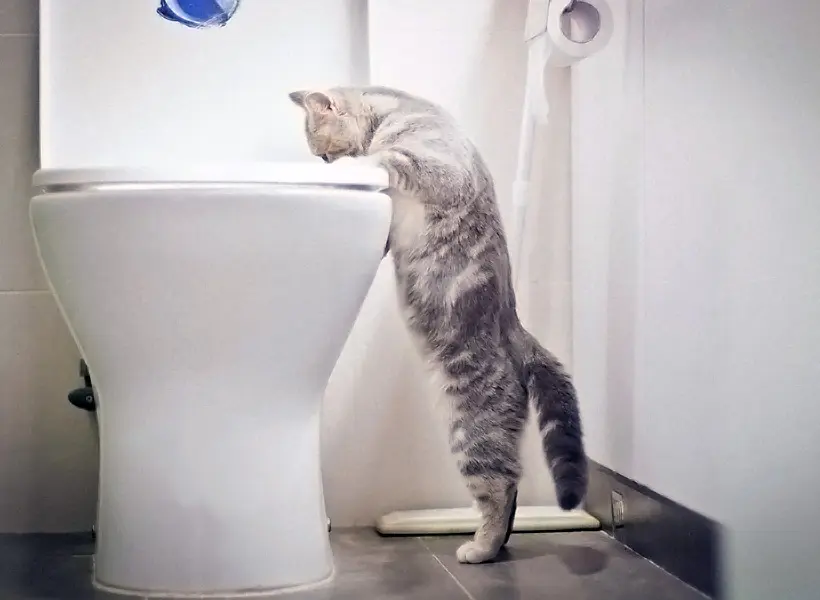Avoid Clogs and Damage: Don't Flush Cat Poop Down Your Toilet - Expert Insights
Avoid Clogs and Damage: Don't Flush Cat Poop Down Your Toilet - Expert Insights
Blog Article
They are making several great points on the subject of How to Dispose of Cat Poop and Litter Without Plastic Bags in general in this great article down below.

Intro
As feline proprietors, it's necessary to bear in mind just how we dispose of our feline good friends' waste. While it might seem hassle-free to purge pet cat poop down the commode, this method can have destructive consequences for both the setting and human health.
Environmental Impact
Purging cat poop introduces unsafe microorganisms and bloodsuckers into the water system, posing a considerable risk to water ecosystems. These pollutants can adversely influence marine life and concession water top quality.
Health Risks
In addition to ecological concerns, flushing feline waste can additionally position health and wellness risks to people. Pet cat feces may include Toxoplasma gondii, a bloodsucker that can cause toxoplasmosis-- a potentially serious ailment, specifically for pregnant ladies and individuals with damaged body immune systems.
Alternatives to Flushing
Fortunately, there are safer and a lot more liable ways to throw away cat poop. Consider the adhering to alternatives:
1. Scoop and Dispose in Trash
One of the most typical method of taking care of feline poop is to scoop it into a biodegradable bag and toss it in the trash. Make sure to utilize a devoted litter inside story and get rid of the waste immediately.
2. Usage Biodegradable Litter
Select eco-friendly pet cat trash made from products such as corn or wheat. These trashes are eco-friendly and can be securely disposed of in the trash.
3. Hide in the Yard
If you have a backyard, take into consideration hiding feline waste in an assigned area away from vegetable yards and water resources. Make sure to dig deep sufficient to avoid contamination of groundwater.
4. Set Up a Pet Waste Disposal System
Invest in an animal waste disposal system particularly created for feline waste. These systems use enzymes to break down the waste, reducing smell and ecological effect.
Final thought
Accountable animal ownership expands past providing food and sanctuary-- it likewise involves proper waste monitoring. By avoiding flushing cat poop down the commode and selecting alternate disposal methods, we can minimize our ecological impact and safeguard human health.
Why Can’t I Flush Cat Poop?
It Spreads a Parasite
Cats are frequently infected with a parasite called toxoplasma gondii. The parasite causes an infection called toxoplasmosis. It is usually harmless to cats. The parasite only uses cat poop as a host for its eggs. Otherwise, the cat’s immune system usually keeps the infection at low enough levels to maintain its own health. But it does not stop the develop of eggs. These eggs are tiny and surprisingly tough. They may survive for a year before they begin to grow. But that’s the problem.
Our wastewater system is not designed to deal with toxoplasmosis eggs. Instead, most eggs will flush from your toilet into sewers and wastewater management plants. After the sewage is treated for many other harmful things in it, it is typically released into local rivers, lakes, or oceans. Here, the toxoplasmosis eggs can find new hosts, including starfish, crabs, otters, and many other wildlife. For many, this is a significant risk to their health. Toxoplasmosis can also end up infecting water sources that are important for agriculture, which means our deer, pigs, and sheep can get infected too.
Is There Risk to Humans?
There can be a risk to human life from flushing cat poop down the toilet. If you do so, the parasites from your cat’s poop can end up in shellfish, game animals, or livestock. If this meat is then served raw or undercooked, the people who eat it can get sick.
In fact, according to the CDC, 40 million people in the United States are infected with toxoplasma gondii. They get it from exposure to infected seafood, or from some kind of cat poop contamination, like drinking from a stream that is contaminated or touching anything that has come into contact with cat poop. That includes just cleaning a cat litter box.
Most people who get infected with these parasites will not develop any symptoms. However, for pregnant women or for those with compromised immune systems, the parasite can cause severe health problems.
How to Handle Cat Poop
The best way to handle cat poop is actually to clean the box more often. The eggs that the parasite sheds will not become active until one to five days after the cat poops. That means that if you clean daily, you’re much less likely to come into direct contact with infectious eggs.
That said, always dispose of cat poop in the garbage and not down the toilet. Wash your hands before and after you clean the litter box, and bring the bag of poop right outside to your garbage bins.
https://trenchlesssolutionsusa.com/why-cant-i-flush-cat-poop/

I hope you liked our article on How to Dispose of Cat Poop and Litter Without Plastic Bags. Thanks for taking time to read our content. Sharing is caring. You never know, you may very well be helping someone out. Many thanks for your time. Kindly visit our website back soon.
Book A Service Report this page